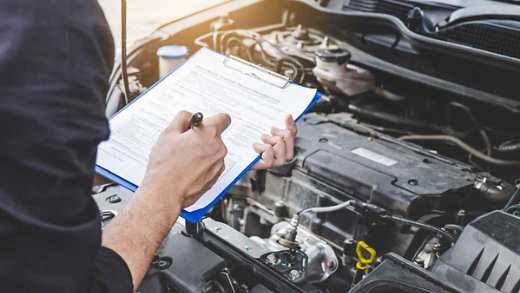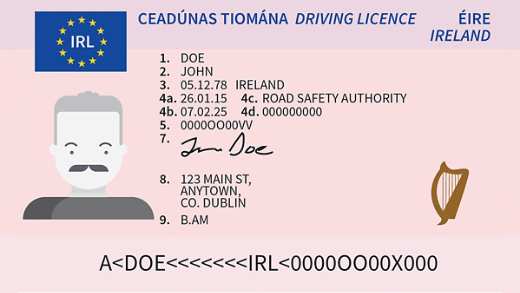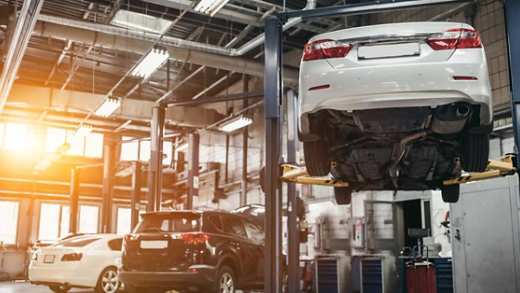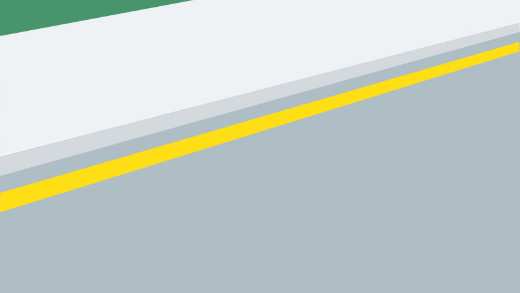One of the fundamental aspects of safe driving is proper tyre care and maintenance. But did you know, that different weather conditions require your tyres to work in different ways? This allows them to achieve the safest travel while you’re on the road.
According to the RSA, most of the tyres used in Ireland are classified as summer tyres1. But what are the differences? What else do we need to consider for tyre safety? Our quick guide to tyre safety will help keep you and your family safe on the road.

Types of tyres
Summer tyres
Summer tyres are made from a more rigid, less pliable rubber than winter tyres. This can cause them to stiffen up in cold temperatures, which can result in decreased grip on snowy and icy roads2. In warmer months however, summer tyres are made from the perfect compounds to increase grip and traction on roads. Summer tyres have an average dry braking distance of 7.5 meters less than winter tyres3.
Winter tyres
Winter tyres are made from a softer rubber than summer tyres; this is to allow them to retain their flexibility in harsh temperatures. They are able to adapt more easily to the road surface they are travelling along. They’re deeply grooved to help ensure a good grip in icy and snowy conditions.
However, the softer rubber can overheat in warmer weather.
Experts such as Michelin, the RSA and Advance Pitstop recommend that when temperatures drop below +7° C, you should consider switching to winter tyres4.
Remember: When switching your tyres, you should change all four tyres to avoid the likelihood of over or under steer, which can cause you to lose control of your car.
All-season tyres
All–season tyres may seem like a convenient ‘best of both worlds’ scenario and cheaper option, but you must keep in mind that while they function averagely in all weather, they don’t excel in any conditions as winter tyres and summer tyres do5.
Frequently asked questions
What is the cost of switching to winter tyres?
A set of four winter tyres can cost anywhere from €370 to €6506.
So, do I need winter tyres when living in Ireland?
While it’s not a legal requirement to switch your tyres during the winter, it’s recommended to keep you as safe on the road as possible. If you live in a remote or hilly area, which is often subject to weather extremes - it may be more advisable to consider winter tyres.
What is the tyre pressure and tread depth?
Having the correct wheel inflation levels is vital as your wheels need to support the weight of your car and also its passengers. Maintaining correct pressure also helps to save fuel while driving. Required tyre inflation varies from car model to car model, so you need to check your specific car manufacturer’s handbook.
While the legal minimum tread depth in Ireland is 1.6mm7, this is not recommended especially for adverse weather. The minimum tread should be at least 3mm, but we would recommend between 8mm and 4mm for maximum safety.
Keep in mind that in colder months, as the temperature drops, so does your tyre pressure8. So, if you haven’t inflated your tyres over the last few months, there is a chance they have less pressure than you think.
What is the tyre age?
Age is another critical factor when it comes to the health of your tyres. Tyres deteriorate naturally through exposure to heat, sunlight (Ultraviolet/UV), rain and general weathering. The process of the tyre degrading can depend on the amount of exposure and the severity of the weather. In everyday vehicles, tyres almost certainly will wear out before they degrade to such an extent they are unusable. Tyres more than 10 years old, including your spare tyres, should be replaced, even if they appear to be in good condition and above the legal tread wear limit of 1.6mm. Believe it or not, when a tyre has been in use, the effects of aging are lessened to a degree, so tyres that have been in storage should not be placed into use if more than six years old. So, remember to check the age of your tyres, and this can be found on the tyre sidewall, the serial number comprises of a four-digit code which refers to the tyre’s date of manufacture (the last two digits refer to the year of manufacture and the first two the week in that year e.g. 2017 is week 20 of 2017). Tyre aging increases the risk of tyre failure which may include a blow-out while being driven.
How often should I service my car?
It’s essential that your car is serviced as often as specified in your car manufacturer’s manual. A general recommendation is at least once every 12 months to ensure your car is in safe, working order. If you hold off on regular car servicing, instead of saving money, you will end up losing out in the long run if your car encounters damage or maintenance issues. However, if you do find yourself unexpectantly breaking down, we’ve got some tips on how to survive an unexpected breakdown. Be sure that you’ve taken out an appropriate level of car insurance to suit your specific needs. If you do breakdown, your insurance will cover you for repairs needed and you’ll enjoy peace of mind with breakdown assistance.
Tyre safety guide? Check?
Steps to take in an unexpected breakdown? Check.
Great cover for your car? Get car insurance to check off.
If you haven’t already insured your car with us, simply buy online and get 15% off!9
















